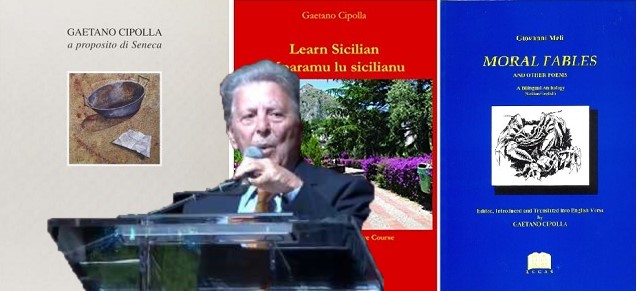Interview by Tiziano Thomas Dossena
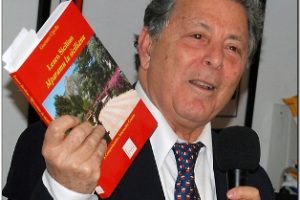 Gaetano Cipolla is Professor Emeritus in the Department of Foreign Languages and Literatures at St. John’s University in New York, where from 1978 to 2011 he taught courses in Italian language, civilization, and literature, along with courses on the art of literary translation. In addition to teaching, Prof. Cipolla held the position of Dean of the Faculty of Foreign Languages from 1996 to 2002.
Gaetano Cipolla is Professor Emeritus in the Department of Foreign Languages and Literatures at St. John’s University in New York, where from 1978 to 2011 he taught courses in Italian language, civilization, and literature, along with courses on the art of literary translation. In addition to teaching, Prof. Cipolla held the position of Dean of the Faculty of Foreign Languages from 1996 to 2002.
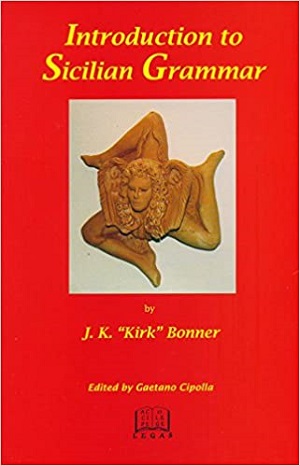 He obtained the following degrees: the Bachelor of Science from New York University, the Master of Arts from Hunter College of New York (CUNY) and the Ph.D. in 1974 from New York University Graduate School of Arts and Sciences.
He obtained the following degrees: the Bachelor of Science from New York University, the Master of Arts from Hunter College of New York (CUNY) and the Ph.D. in 1974 from New York University Graduate School of Arts and Sciences.
The volume “Siciliana: Essays on the Sicilian Ethos”, 2005 represents the most important contribution of Gaetano Cipolla to the study of Sicily and Sicilian culture. The work contains various essays already published and many other unpublished ones aimed at defining Sicilianity through a study of Sicilian history and literature.
His interest in Sicily and the Sicilian language led him to collaborate with J.K Bonner for the “Introduction to Sicilian Grammar”, which represents the first work of its kind in America. Professor Cipolla edited the volume and published it in 2002.
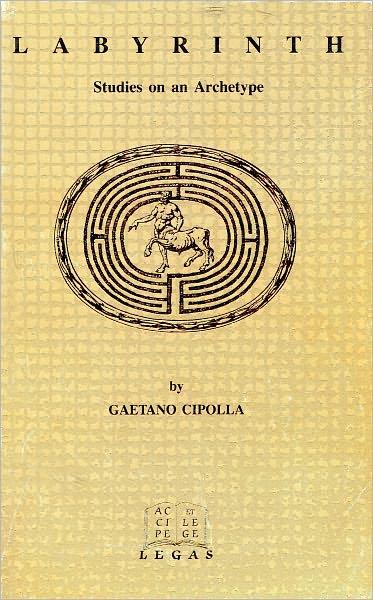 L’Idea Magazine: Good morning Dr. Cipolla. In the first years of university teaching, you carried out an intense activity in the academic world as a literary critic, publishing numerous essays on Petrarca, Dante, Tasso, Pirandello, Calvino and others in Italian journals, such as “Italica”, “Italian Quarterly “,” Quaderni d’Italianistica “,” Gradiva “, etc. In 1987, in particular, you wrote an essay entitled “Labyrinth: Studies on an Archetype.” What was it about?
L’Idea Magazine: Good morning Dr. Cipolla. In the first years of university teaching, you carried out an intense activity in the academic world as a literary critic, publishing numerous essays on Petrarca, Dante, Tasso, Pirandello, Calvino and others in Italian journals, such as “Italica”, “Italian Quarterly “,” Quaderni d’Italianistica “,” Gradiva “, etc. In 1987, in particular, you wrote an essay entitled “Labyrinth: Studies on an Archetype.” What was it about?
Gaetano Cipolla: Before devoting myself to Sicilian culture, I had already reached the rank of Associate Professor at St. John’s University and I was interested in topics that had nothing to do with Sicily. The book Labyrinth: Studies on an Archetype contains essays of literary criticism based on the writings of C.G. Jung, E. Neumann, and other scholars of Depth Psychology. My Ph.D. degree was entitled “The Archetype of the Labyrinth and Its Manifestations in Petrarch”. The essays published in that book derive in part from the dissertation, but I also added other studies of Jungian criticism on the figure of Ulysses in Dante’s Inferno and on the presence of the labyrinth in Pirandello and Calvino.
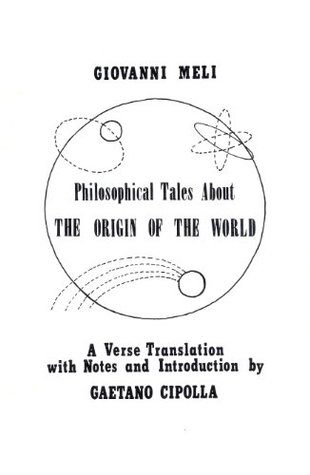 Although I earned my Ph.D. in Italian literature, I knew very little about the vast literature written in Sicilian. It is difficult to isolate the spark that prompted me to dedicate a good part of my career to promoting the Sicilian language and culture. It was a gradual process that started at NYU when I was asked to recite some poetry in Sicilian. I remember reading two poems by Giovanni Meli. Experience taught me that true poetry is the one that produces shivers in us. And this happens mainly in the language “addutata dî patri” as Ignazio Buttitta said, that is the language you learn as a child. That evening I recited “L’occhi” by Meli, which begins with “Ucchiuzzi niuri, si taliati / faciti cadiri / casi e citati”. (Black loving eyes/ if you look coy / houses and cities / you will destroy). That “ucchiuzzi niuri”, translated into English or Italian has little effect on me, while in Sicilian it evokes dormant emotions and memories, induces epiphanies, enters the soul directly and immediately, I would say viscerally.
Although I earned my Ph.D. in Italian literature, I knew very little about the vast literature written in Sicilian. It is difficult to isolate the spark that prompted me to dedicate a good part of my career to promoting the Sicilian language and culture. It was a gradual process that started at NYU when I was asked to recite some poetry in Sicilian. I remember reading two poems by Giovanni Meli. Experience taught me that true poetry is the one that produces shivers in us. And this happens mainly in the language “addutata dî patri” as Ignazio Buttitta said, that is the language you learn as a child. That evening I recited “L’occhi” by Meli, which begins with “Ucchiuzzi niuri, si taliati / faciti cadiri / casi e citati”. (Black loving eyes/ if you look coy / houses and cities / you will destroy). That “ucchiuzzi niuri”, translated into English or Italian has little effect on me, while in Sicilian it evokes dormant emotions and memories, induces epiphanies, enters the soul directly and immediately, I would say viscerally.
L’Idea Magazine: While collaborating with various Italian magazines, in 1978 you were co-editor of “La Parola del Popolo,” the oldest Italian language magazine in America. How did this adventure of yours, which lasted a good six years, come about? What happened to the magazine?
Gaetano Cipolla: I worked with Egidio Clemente, an old trade unionist who worked as a typographer. La Parola del Popolo (The Word of the People) was the official organ of the American Socialist Party, founded in 1907. I wrote literary articles, some editorials, and helped Egidio with proofreading. The magazine lasted until 1984 when Egidio, who was the soul of the magazine, passed away.
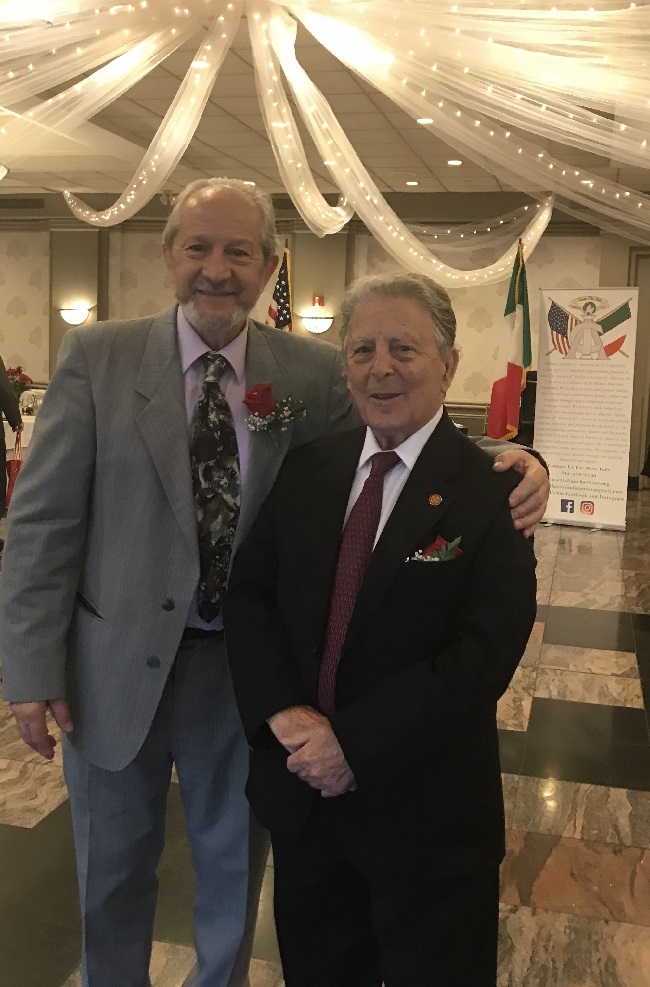
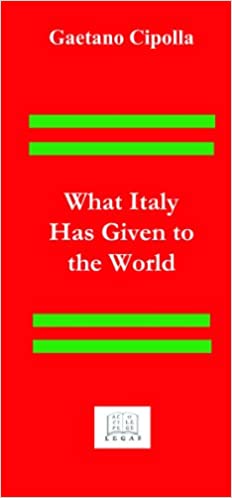 L’Idea Magazine: Could you tell us about your relationship with the Italian Journal? [Also talk about your article, “What Italy Has Given to the World”
L’Idea Magazine: Could you tell us about your relationship with the Italian Journal? [Also talk about your article, “What Italy Has Given to the World”
Gaetano Cipolla: Italian Journal was an important magazine on Italy edited by Vittorio Tesoro. My responsibility was to compose the Journal typographically, although I also wrote some articles and reviews. It was the time when we began to use the computer to layout and design magazines and having acquired a certain skill with composition programs such as the old “Ventura Publisher”, I designed and composed the journal typographically and wrote some articles and reviews of books.
The brochure What Italy Has Given to the World was born as a presentation to the students of the Italian club at the University. I asked myself the following question: “What would be missing from the world today if the Italian peninsula had not emerged from the Mediterranean Sea?” The answers between joking and serious offer readers the vast contributions to Western civilization made by the peoples who have inhabited the Italian peninsula. For example, America would lose its name, a thousand American cities bearing Latin or Italian names would disappear. The booklet, which was first published in the Italian Journal was printed as a booklet later and was very successful. NIAF ordered two thousand and five hundred copies. In fact, they used it as an incentive to motivate people to join NIAF by offering the book for free to new members. Other associations, such as “The Sons of Italy”, have ordered thousands of copies. The brochure still sells. The other day the Garibaldi and Meucci Museum ordered 25 copies. In all, we have sold more than 25,000 copies.
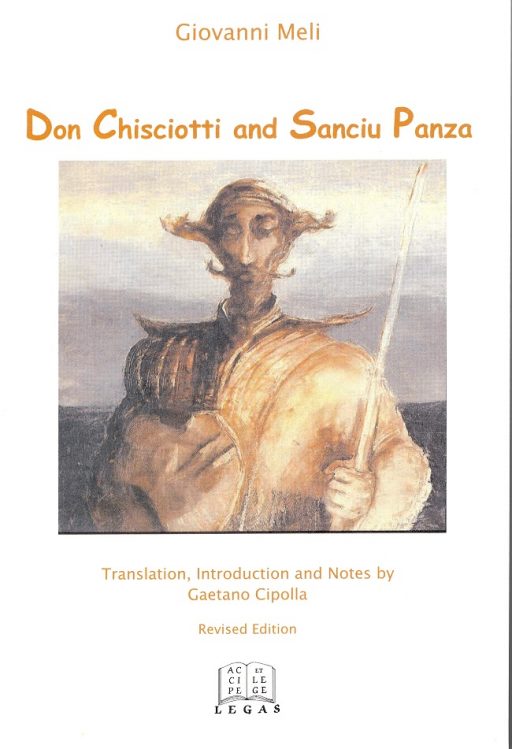 L’Idea Magazine: At a certain point, however, you focused your energies on Sicily, its culture, and its writers … almost abandoning your writings on Italian authors. What made you change direction?
L’Idea Magazine: At a certain point, however, you focused your energies on Sicily, its culture, and its writers … almost abandoning your writings on Italian authors. What made you change direction?
Gaetano Cipolla: I wanted to go back to my Sicilian roots and realized that as an immigrant at a certain point you are neither Italian nor American. Going back to Sicily I was regarded as American and in America was not really American. I wanted to reclaim my identity as a Sicilian. My interest in Meli was natural. He was not only the greatest Sicilian poet, but he expressed the essence of the spirit of Sicilians in his works. Meli, as Giuseppe Pitrè said, “was the most perfect embodiment of the ideals and aspirations of the upper and middle class of the eighteenth century, and also the most outspoken painter of the customs of the time … who deplores the miseries of the times.” In his works, he expresses the permanent contrast in his spirit between idealism and skepticism. His Don Chisciotti and Sanciu Panza is, in fact, a projection of the dilemma that raged inside of him. It embodies the idealism of Don Chisciotti who hoped for a better world for the poor Sicilians, who carved on a tree trunk his ideas for a more equitable distribution of wealth, a better application of justice, a need for universal peace, but it also embodies the skepticism of Sanciu Panza, who believed only what he could touch with his hands, who knew from experience that the Sicilian status quo would not change. The contrast between the two tendencies of the Melian spirit was ultimately won by Sanciu, who was the true protagonist of the poem, not Don Chisciotti, whose praiseworthy ideals are ridiculed by the squire as the delusions of a madman. Sanciu wrote the following epitaph on his master’s tomb:
La cinniri ch’è sutta sta balata
Fu spogghia d’un eroi di desideriu;
chi mai sappi cunsari na nzalata,
non ostanti pritisi in tonu seriu
di cunsari lu munnu…
The ashes that lie under the slab of stone
Are the remains of one who would be hero
Who never knew how to fix a salad
And yet pretended he could fix the world.
In the afterlife, for his folly, Don Chisciotti is condemned to gather the wind with a net for six months and as a reward for his saintly ideals spend the other six months in the Elysian Fields, while Sanciu earned a place among the philosophers. The Don Chisciotti and Sanciu Panza is different from Cervantes’ Spanish model. In this work, we see how times have changed and how eighteenth-century Sicily is different from Cervantes’ Spain. It is a work of twelve Cantos and a Vision that I tried to re-evaluate even from a critical point of view in the introduction.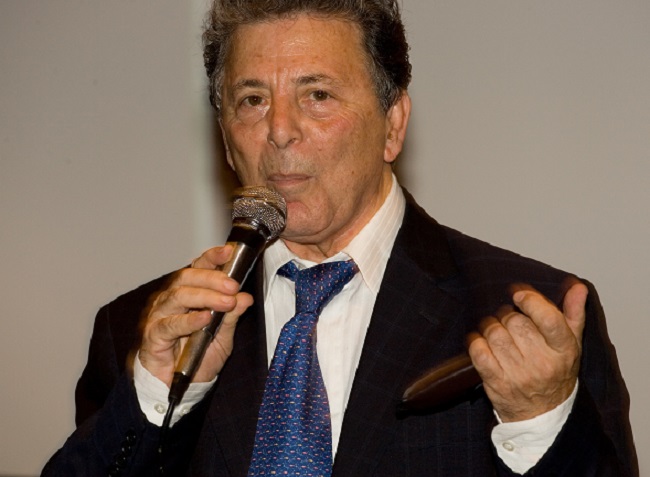
L’Idea Magazine: Your first work of translation into English was L’origini di lu munnu, (1985) by Giovanni Meli, published by Arba Sicula. Why did you choose this book to translate?
Gaetano Cipolla: L’origini di lu munnu is a delightful, satirical masterpiece in which the poet imagines Jove, the father of the gods, in conversation with his children while exploring how to create the world that did not exist “at the time when time was yet not time”. The Olympians offer their opinions on how to create the world, but Jove ridicules them. In the end, he understood that the only substance that existed was himself and he asked his children to tear him apart and use his body parts to create the world. Thus, one of his legs becomes the Italian peninsula and the head becomes Sicily!
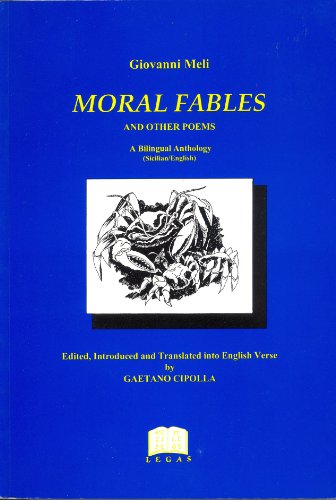 L’Idea Magazine: A third volume on Giovanni Meli, (“Favuli morali”), was published two years later. What problems did you face in translating it?
L’Idea Magazine: A third volume on Giovanni Meli, (“Favuli morali”), was published two years later. What problems did you face in translating it?
Gaetano Cipolla: According to some, Favuli morali is Meli’s masterpiece. The fables are the fruit of a scientist who knows the world deeply. By making the animals speak, Meli could say what he thought without fear of the social repercussions he would have been exposed to if he had said them in the first person. Meli did not moralize as La Fontaine does, for example, but through what animals do and say, the moral lesson becomes transparent, like the case of the crab who wants to teach his children to walk straight while he cannot teach them by example.
I translated the 89 fables using the metric scheme of the originals. This requires great efforts to find the right rhymes without damaging the fluency of the language. In some cases, the fables are written in terza rima, like Dante‘s Divine Comedy, requiring even greater effort. These fables are little masterpieces that fully convey Meli’s wisdom.
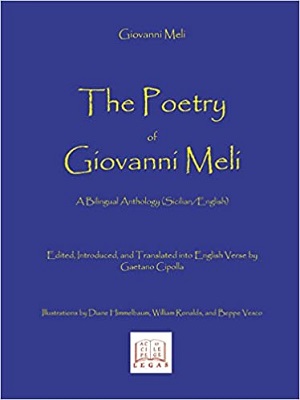 L’Idea Magazine: Clearly Meli is your favorite author, since you have also published a Melian anthology (also in translation). Could you tell us about it?
L’Idea Magazine: Clearly Meli is your favorite author, since you have also published a Melian anthology (also in translation). Could you tell us about it?
Gaetano Cipolla: This anthology contains Meli’s most important works in bilingual format. I also included a chapter of nearly one hundred octaves of the Don Chisciotti and Sanciu Panza. It is a large volume that gives the reader the most beautiful pages of this brilliant Sicilian poet who deserves to be better known in America. Meli was a scientist (he was a doctor) and professor of chemistry at the University of Palermo as well as being an exquisite poet. Many consider him an Arcadian who was interested in shepherds and shepherdesses, while he was actually a man of science who knew how to evaluate reality. Pirandello, who knew Meli’s work very well, rejected the view that is fellow Sicilian was an Arcadian, adding that Meli possessed all the instruments of poetry in his hand and not just the shepherds’ flute.
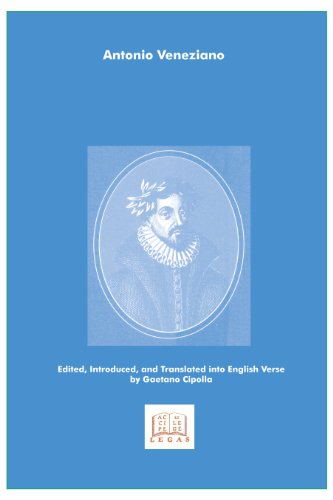 L’Idea Magazine: You also dedicated yourself to other Sicilian authors, contributing two important profiles of Nino Martoglio and Vitaliano Brancati to the Dictionary of Literary Biography, and then published two volumes of poems by Antonio Veneziano, “Ninety Love Octaves” and “Sicilian Rhymes of Love, Disdain and Faith.” What made you choose these authors?
L’Idea Magazine: You also dedicated yourself to other Sicilian authors, contributing two important profiles of Nino Martoglio and Vitaliano Brancati to the Dictionary of Literary Biography, and then published two volumes of poems by Antonio Veneziano, “Ninety Love Octaves” and “Sicilian Rhymes of Love, Disdain and Faith.” What made you choose these authors?
Gaetano Cipolla: Knowing that I was interested in Sicilian literature, the editors of the Dictionary asked me to write a profile on the plays of Martoglio and Brancati. In the case of Martoglio, I had already published The Poetry of Nino Martoglio, an anthology from his popular collection Centona.
I founded a series of books entitled “Pueti d’Arba Sicula / Poets of Arba Sicula”, whose objective is to make known the best of poetry written in Sicilian because I am convinced that poets are actually the best ambassadors of a country. I’d like to point out that for this series the introductions and translations into English are almost all mine. (In addition to Italian language and literature, I also taught courses on the art of translation at St. John’s University.)
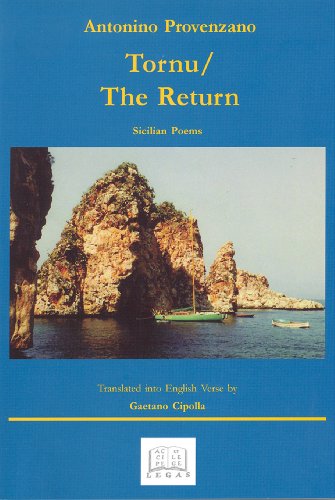 The volume on Martoglio was the second in that series. The first was Malidittu la lingua (Damned Language) by Vincenzo Ancona, a poet much loved by our compatriots from Castellammare del Golfo in Brooklyn and in Sicily. The series publishes famous poets of the past as well as contemporary poets. The last volume (number 17) introduced the poetry of Maria Nivea Zagarella, a poet from Francofonte. Thus, in addition to Antonio Veneziano and Giovanni Meli, contemporary poets, such as Salvatore Di Marco, Nino De Vita, Senzio Mazza, Piero Carbone, Marco Scalabrino, and Nino Provenzano, Vice President of Arba Sicula, are included. For those unfamiliar with Sicilian poetry, these remain only names, but each of them represents important moments of literature in the Sicilian language.
The volume on Martoglio was the second in that series. The first was Malidittu la lingua (Damned Language) by Vincenzo Ancona, a poet much loved by our compatriots from Castellammare del Golfo in Brooklyn and in Sicily. The series publishes famous poets of the past as well as contemporary poets. The last volume (number 17) introduced the poetry of Maria Nivea Zagarella, a poet from Francofonte. Thus, in addition to Antonio Veneziano and Giovanni Meli, contemporary poets, such as Salvatore Di Marco, Nino De Vita, Senzio Mazza, Piero Carbone, Marco Scalabrino, and Nino Provenzano, Vice President of Arba Sicula, are included. For those unfamiliar with Sicilian poetry, these remain only names, but each of them represents important moments of literature in the Sicilian language.
You asked me why I chose Veneziano. Antonio Veneziano was the greatest Sicilian poet of the Renaissance and was known as the Sicilian Petrarch. When people heard a particularly beautiful poem and did not know who the author was, they automatically attributed it to Veneziano. He was a great defender of the Sicilian language, saying that being Sicilian he did not want to become a parrot by repeating the language of others. And so he wrote in Sicilian even though he knew how to write in Latin and Italian. An extraordinary character for many reasons!
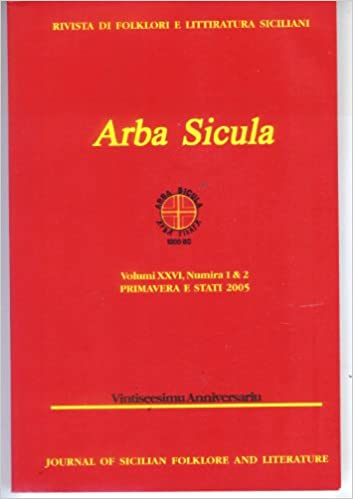 L’Idea Magazine: Your name, since 1987, however, is always associated with “Arba Sicula”. What does this association do? What is your function within this association?
L’Idea Magazine: Your name, since 1987, however, is always associated with “Arba Sicula”. What does this association do? What is your function within this association?
Gaetano Cipolla: Arba Sicula was founded in 1979 by a group of Sicilian-Americans such as Joseph Polisi, Gaetano Giacchi, and Alissandru Caldiero, who wanted to give a different image of Sicily and Sicilians from the stereotypes seen on American TV and cinema, and to rediscover truer cultural values shared by Sicilians, as well as to highlight the island’s contributions to Western civilization. At first, my role was marginal, but I participated in the activities promoted by the group. Then, as my interest in the Sicilian language and culture grew, I began to contribute more consistently and in 1976-7, when the association was in crisis, I agreed to become Editor of its publications, and then President.
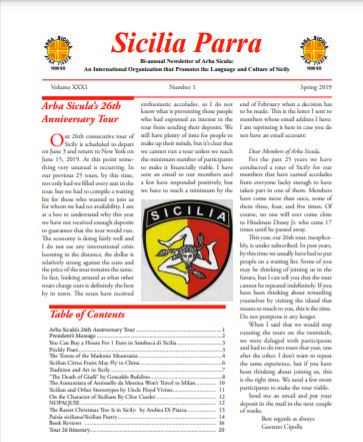 The first issue of Arba Sicula was prepared using the first laser printer on the market, which only had Courier as the typeface! Before, my predecessor used an electric IBM. We were able to pay off the debts and to give a more academic imprint to the magazine, reaching an enviable number of subscribers in a few years. During the life of the association, we have offered our members hundreds of cultural programs at St. John’s University and we have organized 26 annual trips to Sicily. We also resumed the publication of Sicilia Parra (a semi-annual 20-page magazine that has reached its thirty-third year, while Arba Sicula is already in its forty-second year), and we have published numerous books on Sicily.
The first issue of Arba Sicula was prepared using the first laser printer on the market, which only had Courier as the typeface! Before, my predecessor used an electric IBM. We were able to pay off the debts and to give a more academic imprint to the magazine, reaching an enviable number of subscribers in a few years. During the life of the association, we have offered our members hundreds of cultural programs at St. John’s University and we have organized 26 annual trips to Sicily. We also resumed the publication of Sicilia Parra (a semi-annual 20-page magazine that has reached its thirty-third year, while Arba Sicula is already in its forty-second year), and we have published numerous books on Sicily.
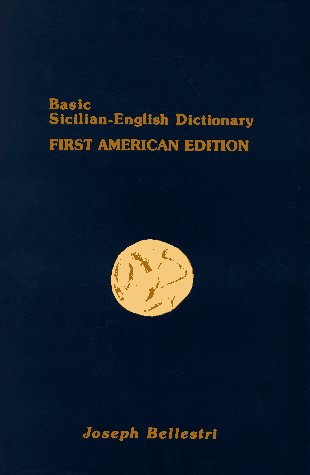 Now, Arba Sicula, with its 1400 subscribers, is a prestigious and respected association in the Sicilian communities of America, but also in Sicily. In fact, Arba Sicula is unique among the Sicilian associations of America. I say this not for boasting but because it is a fact.
Now, Arba Sicula, with its 1400 subscribers, is a prestigious and respected association in the Sicilian communities of America, but also in Sicily. In fact, Arba Sicula is unique among the Sicilian associations of America. I say this not for boasting but because it is a fact.
Arba Sicula published the first and only English-Sicilian-English Dictionary (by Joseph Bellestri), the first Sicilian grammars by Joseph Privitera and Kirk Bonner, and then my Learn Sicilian / Mparamu lu sicilian, conceived as a textbook that uses modern pedagogy for teaching foreign languages. The success of this volume convinced me to write Learn Sicilian II, just published. This volume is written in Sicilian because it assumes that students have already acquired a basic knowledge of the language. It is equivalent to the second year of study at the university level. On November 30, 2021, I will present the book to the Columbus Foundation.
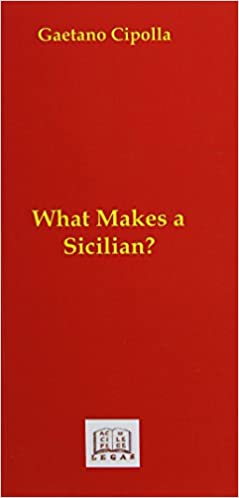 L’Idea Magazine: In addition to your literary activities, you also organize programs, in universities, in Italian parishes, and on public media, that aim at the dissemination of the Sicilian language and culture in the Sicilian-American communities of the United States …
L’Idea Magazine: In addition to your literary activities, you also organize programs, in universities, in Italian parishes, and on public media, that aim at the dissemination of the Sicilian language and culture in the Sicilian-American communities of the United States …
Gaetano Cipolla: In this country, there are many Sicilians. I would say that 40% of the Italian-American population has its origins in Sicily. The first generations of emigrants have now disappeared, but the children and grandchildren have a great interest in discovering and understanding the culture in which they participate because of their grandparents and great-grandparents. Unknowingly, they live that culture they have absorbed by osmosis by living in a Sicilian environment in the family. The same for the language they must have heard growing up. Arba Sicula offers them the opportunity to explore why they act in a certain way. Reading my pamphlet What Makes a Sicilian? an American woman married to a Sicilian once told me verbatim, “Now that I’ve read your book, I understand my husband much better.”
Arba Sicula plays an important role for Sicilian immigrants, introducing them to Sicily. It sounds strange but it is true. The emigrants of the past two centuries, leaving for America, did not know Sicily. They knew their town and perhaps the neighboring ones, but not Sicily. Once, an immigrant from the Bronx who came with us on one of the first tours of the island, said to me, “Thank you for showing me the beauty of our island that I did not know at all!” Every year he returned to Casteldaccia near Palermo and stayed there for a month without visiting other towns. Another Sicilian tourist from California, after taking the tour, gave me a small silver sailing ship bought in Taormina, saying, “Thank you, I learned to understand who I am by reading your books.” Appreciations of this kind usually embarrass me, but I accept them because they are sincere. Almost all those who send me the check to renew their subscription write phrases like this: “Thank you for defending and keeping up the Sicilian language and culture!”
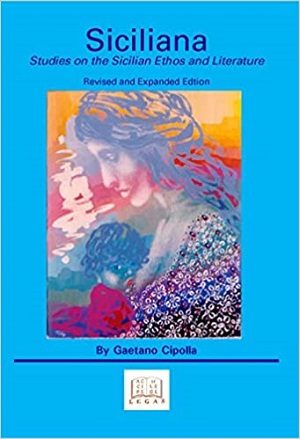 L’Idea Magazine: You have sold more than 25,000 copies of “What Makes a Sicilian.”
L’Idea Magazine: You have sold more than 25,000 copies of “What Makes a Sicilian.”
There is, evidently, a great deal of interest in this topic …
Gaetano Cipolla: The booklet is offered to all new members of Arba Sicula. I tried to explain to myself what it means to be Sicilian. Obviously, a booklet of just thirty-two pages cannot hope to define a people that has three thousand years of complex history behind it, a people that has suffered the presence of many foreign peoples attracted by the beauty and wealth of the island. Seventeen different dominations have left visible traces in the Sicilian DNA and on their behavior; the Greeks, the Romans, the Arabs, the Normans, and the Spaniards. Everyone left something, but without altering the physiognomy of Sicilians that much. Already in 424 BC, Hermocrates of Gela claimed the Sicilian character of the island’s inhabitants, who had by then emancipated themselves from Greece by saying, “We are neither Doric nor Ionians, we are Sicilians!” The booklet is more my personal view of the Sicilians, but apparently shared by many since many order it. The booklet is also included in the volume Siciliana: Studies on the Sicilian Ethos, which contains chapters on the relationship between Greece and Sicily, the drama of the Jews in Sicily, a history that few know, the Arabs and their importance, and other essays.
L’Idea Magazine: You founded an international publishing house (“Legas”) whose main purpose, at its inception, was to publish books that have a link with Sicily and its people. When did you come up with this idea? In those years in which you made this decision, did you imagine that you would be so successful in such a limited editorial niche?
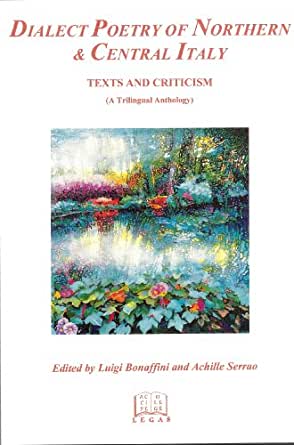 Gaetano Cipolla: Legas was founded by my colleague Leonardo Sbrocchi, an Italian professor in Ottawa. The first book published was my Labyrinth: Studies on an Archetype, already mentioned. Ours is a publishing house with the same name and we collaborate in various ways, but we operate independently. He, in Canada, and I in the United States. I deal, but not exclusively, with Sicilian culture. I founded three series of books: “Pueti d’Arba Sicula”, already mentioned, “Sicilian Studies,” which explores the Sicilian identity, the language and history of Sicily with about thirty titles already in print, and “Italian Poetry in Translation,” which publishes Italian poets translated into English, with seventeen volumes already in print, including two large anthological volumes in three languages for a total of 1200 pages that focus on the best dialect poetry published in Italy: Dialect Poetry of Southern Italy and Dialect Poetry of Central and Northern Italy.
Gaetano Cipolla: Legas was founded by my colleague Leonardo Sbrocchi, an Italian professor in Ottawa. The first book published was my Labyrinth: Studies on an Archetype, already mentioned. Ours is a publishing house with the same name and we collaborate in various ways, but we operate independently. He, in Canada, and I in the United States. I deal, but not exclusively, with Sicilian culture. I founded three series of books: “Pueti d’Arba Sicula”, already mentioned, “Sicilian Studies,” which explores the Sicilian identity, the language and history of Sicily with about thirty titles already in print, and “Italian Poetry in Translation,” which publishes Italian poets translated into English, with seventeen volumes already in print, including two large anthological volumes in three languages for a total of 1200 pages that focus on the best dialect poetry published in Italy: Dialect Poetry of Southern Italy and Dialect Poetry of Central and Northern Italy.
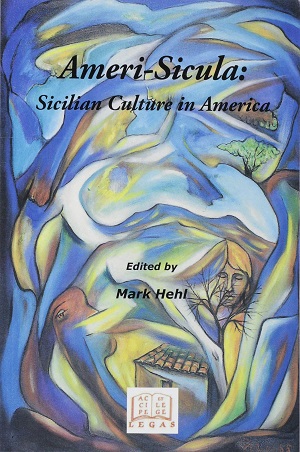 L’Idea Magazine: Can you tell us about the other series you created, entitled “Sicilian Studies”.
L’Idea Magazine: Can you tell us about the other series you created, entitled “Sicilian Studies”.
Gaetano Cipolla: With this series, I wanted to give Sicilian writers the opportunity to tell their story, instead of reading non-Sicilian writers who write about Sicily. The latest book published was published by Mark Hehl and is called Ameri-Sicula: Sicilian Culture in America. In it, about thirty Sicilian-American writers tell their experiences.
The Idea Magazine: “Learn Sicilian / Mparamu lu Sicilianu” is a university textbook written by you. How was it received?
Gaetano Cipolla: The book has been very successful in the United States. We are already at the third reprint. It has also been translated into Italian by prof. Alfonso Campisi, who is using it in his courses at the University of La Manouba in Tunis, where there is a large colony of Sicilians. Learn Sicilian / Mparamu lu Sicilianu is also used in America as a textbook at the University of Pennsylvania in Philadelphia. Italian Charities of America has adopted it for its courses on Sicilian.
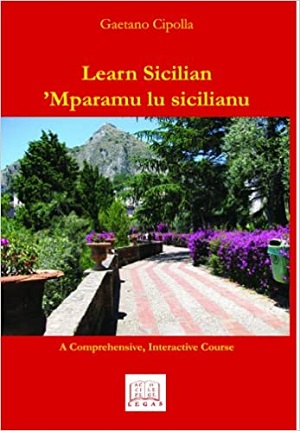 Evidently, there is a lot of interest in the Sicilian in this country, more than in Sicily, I must confess with some bitterness, where people have been indoctrinated to consider Sicilian a corruption of Italian, ignoring that the Italian literary canon was born in Sicily, under Frederick II. The success of the book convinced me that a second, more advanced volume had to be written because a language cannot be learned in two semesters. Thus, Learn Sicilian II was born, which together with the first volume offers university students the opportunity to specialize in Sicilian. The book will help students increase their knowledge of Sicilian by relying on their knowledge of English. I’ll briefly explain the concept: English, which many think is an Anglo-Saxon language, derives at least 50% of its words from Latin. Through a study of the roots of words, prefixes, suffixes, and endings, which English uses in the same way as Sicilian, the student can learn a large number of new words and also form new words: An example: in Latin with the nexus ADM many words are created such as administratio, admonere, admittere, admirari. English uses the same nexus to create administration, admonish, admit and admire, while Sicilian assimilates ADM with amm and forms amministrazioni, ammoniri, ammettiri and ammirari. By learning a limited number of roots, prefixes, suffixes and endings a student multiplies his vocabulary and learns how a language is formed, increasing his comprehension. An example of suffixes: words ending with able in English in will use abbili in Sicilian. Affable becomes affabbili, inevitable becomes inevitabbili, vulnerable vulnerabbili etc.
Evidently, there is a lot of interest in the Sicilian in this country, more than in Sicily, I must confess with some bitterness, where people have been indoctrinated to consider Sicilian a corruption of Italian, ignoring that the Italian literary canon was born in Sicily, under Frederick II. The success of the book convinced me that a second, more advanced volume had to be written because a language cannot be learned in two semesters. Thus, Learn Sicilian II was born, which together with the first volume offers university students the opportunity to specialize in Sicilian. The book will help students increase their knowledge of Sicilian by relying on their knowledge of English. I’ll briefly explain the concept: English, which many think is an Anglo-Saxon language, derives at least 50% of its words from Latin. Through a study of the roots of words, prefixes, suffixes, and endings, which English uses in the same way as Sicilian, the student can learn a large number of new words and also form new words: An example: in Latin with the nexus ADM many words are created such as administratio, admonere, admittere, admirari. English uses the same nexus to create administration, admonish, admit and admire, while Sicilian assimilates ADM with amm and forms amministrazioni, ammoniri, ammettiri and ammirari. By learning a limited number of roots, prefixes, suffixes and endings a student multiplies his vocabulary and learns how a language is formed, increasing his comprehension. An example of suffixes: words ending with able in English in will use abbili in Sicilian. Affable becomes affabbili, inevitable becomes inevitabbili, vulnerable vulnerabbili etc. 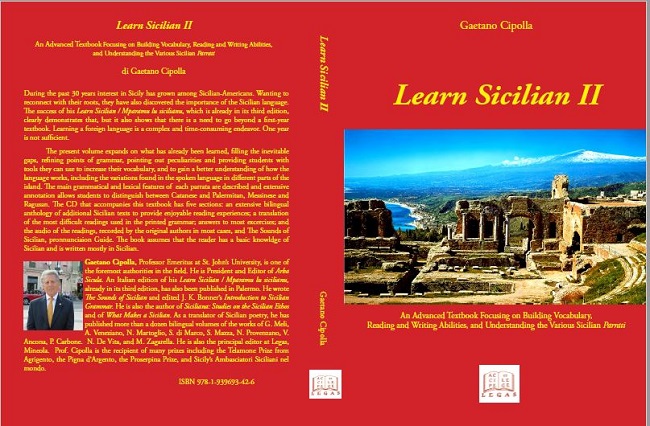 I could give many other examples. but it will be better to leave it at that. The book also focuses attention on the diatopic variation, that is, on the differences that exist in the language spoken in the various Sicilian provinces. This is the first grammar that deals with the local variation heard in Catania, Palermo, Ragusa, etc., giving the most important characteristics, not to teach students how to speak in Catanese, but so that they can distinguish Catanese from the dialect spoken in Ragusa or Agrigento and understand that Sicilian always remains a language because the differences exist only in the spoken language and not in the written language.
I could give many other examples. but it will be better to leave it at that. The book also focuses attention on the diatopic variation, that is, on the differences that exist in the language spoken in the various Sicilian provinces. This is the first grammar that deals with the local variation heard in Catania, Palermo, Ragusa, etc., giving the most important characteristics, not to teach students how to speak in Catanese, but so that they can distinguish Catanese from the dialect spoken in Ragusa or Agrigento and understand that Sicilian always remains a language because the differences exist only in the spoken language and not in the written language.
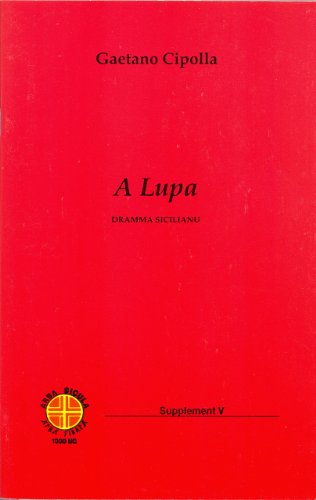 L’Idea Magazine: In addition to publishing, literary criticism, translation and teaching, you have expressed your “Sicelitude” by writing an opera libretto in Sicilian. Can you tell us about it?
L’Idea Magazine: In addition to publishing, literary criticism, translation and teaching, you have expressed your “Sicelitude” by writing an opera libretto in Sicilian. Can you tell us about it?
Gaetano Cipolla: I had never written anything in Sicilian before Andrew Liotta asked me to write a libretto using the plot of Giovanni Verga’s short story “La Lupa” as a basis. I wrote it in one evening, naturally returning to polish it and make it consistent with the composer’s needs. Liotta set the opera to music and we were able to present some arias in concert at St. John’s University. Unfortunately, Liotta passed away and I don’t know if I will ever have the pleasure of seeing it performed in the theater.
L’Idea Magazine: Certainly all the awards received are pleasing, but of the numerous awards they have conferred on you, which one was the most significant for you as a Sicilian? And as a teacher?
Gaetano Cipolla: I have received many awards for my work in favor of Sicily and for teaching, but I don’t want to identify them so as not to show off. The greatest reward I retain is the affection and esteem of my students who are happy to see me when I meet someone at an event.
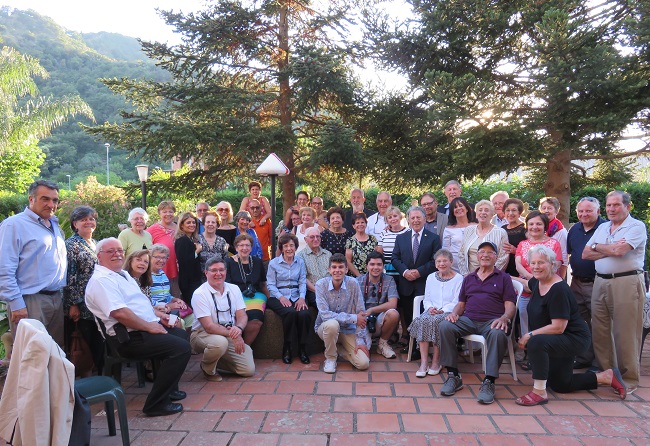
L’Idea Magazine: You conduct an annual tour of Sicily for 35-40 members of Arba Sicula, which the virus has clearly not allowed you to do in the last two years. What does it consist of? A rediscovery of their region for Sicilian-Americans?
Gaetano Cipolla: Sicily is the best-kept secret in the world. That is, Sicily has so many beauties that, due to the continuous negative campaigns on the island, have remained unknown. Arba Sicula has tried all these years to give its members the opportunity to discover and become aware of the variety and natural, architectural and cultural richness of the island, and I am proud to say that all those who have taken the tour with us have become little ambassadors, multiplying among their acquaintances the positive feeling they had personally felt. Obviously, I don’t want to say that the credit for the increase in tourism in Sicily belongs to Arba Sicula, but we certainly contributed to the discovery of the treasures of Sicily. On our first tour, there was only one bus in the Segesta parking lot: ours. In recent years, the bus has to stop on the road because there is no more space for the bus to park.
L’Idea Magazine: Could you define the term Sicilianity?
Gaetano Cipolla: The term “Sicilianity” is by no means easy to define. If it were, I wouldn’t have written thirty-two pages to try and explain it to myself. Sicilians are complex people and when one believes that he has found the key to uncover the mystery, situations arise in which the key no longer works. Try reading What Makes a Sicilian? You will have an idea of the things that Sicilians consider important in social behavior, but all without categorical or prescriptive claims.
L’Idea Magazine: Could you tell us about “Casa Sicilia”?
Gaetano Cipolla: It was a good initiative that unfortunately ended badly.
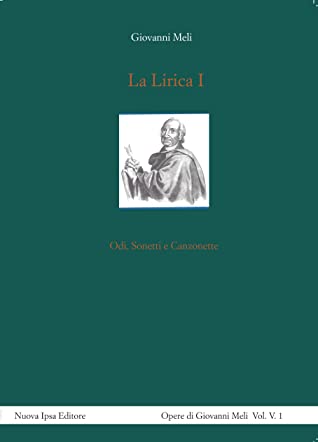 L’Idea Magazine: Do you have any particular wishes or perhaps unfulfilled dreams?
L’Idea Magazine: Do you have any particular wishes or perhaps unfulfilled dreams?
Gaetano Cipolla: The publisher of Nuova Ipsa in Palermo had begun a project to publish critical editions of the work of Giovanni Meli (1740-1815) in eleven volumes. My task was to edit the three volumes dedicated to his Lyrical Poems. Lirica I has already been published, Lirica II is waiting to be printed. The complete text is already in the hands of the publisher, but unfortunately, he died last month. Now I don’t know if the project will be continued or not by his successor. We will see. In any case, I hope to be able to complete the work begun by publishing the third volume of the Lirica as well.
L’Idea Magazine: If you could meet any character from the past or present, who would it be and what would you like to ask him (or her)?
Gaetano Cipolla: The authors that I care about have already spoken at length through their books. Everything they had to say they have already said.
L’Idea Magazine: Do you have any other literary works in progress at the moment?
Gaetano Cipolla: It is a project that unfortunately is very difficult if not impossible. Last week I spoke via Zoom at a conference organized by the Sicilian Academy of Palermo on my efforts to restore the Sicilian language to the texts of the Sicilian School that flourished under Emperor Frederick II. As you know, the original lyrics have all disappeared except one song by Stefano Protonotaro. We are left with only some codes transcribed by Tuscan scribes who have made not a simple transcription but a real translation from Sicilian to Tuscan, changing the rhymes, often altering the meanings. Since we cannot go back to the original texts, I decided to do what the copyists did, that is, to retranslate their translation. I made three experiments with texts by Giacomo da Lentini, the inventor of the sonnet. I include a beautiful song by Giacomo in the new Sicilian guise and my English translation. Since space is not a problem, I include my translation as well:
Miravigghiusamenti
Miravigghiusamenti
‘n amuri mi distrinci
e mi teni ad ogn’ura.
Com’omu poni menti
in àutru esempiu e pinci
la simili pintura,
cussì, bedda, facc’eu,
ca ’nfra lu cori meu
portu la to figura.
‘N cor pari ch’eu vi porti,
pinta comu pariti,
e non pari di fori.
Deu, com’ mi pari forti
non so si lu sapiti,
com’ v’amu di bon cori;
ch’eu sù sì virgugnusu
ca pur vi guardu ascusu
e non vi mustru amori.
Avennu gran disiju
dipinsi na pintura,
bedda, vui sumigghianti,
e quannu vui non viju
guardu nni dda figura,
pari ch’eu v’aggia avanti:
comu chiddu chi cridi
salvarisi pir fidi,
ancor non vija inanti.
In cori m’ardi dogghia,
com’om chi teni focu
nni lu so senu ascusu,
e quannu chiù lu ’nvogghia,
allura ardi chiù ddocu
e non pò stari nchiusu:
similementi eu ardu
quannu pass’e non guardu
a vui, vis’amurusu.
S’eu guardu, quannu passu,
inversu a vui no giru,
bedda, pir risguardari;
annannu, ad ogni passu
e jettu un gran suspiru
ca facimi ancusciari;
e certu beni ancusciu,
c’a pena mi canusciu,
tantu bedda mi pari.
Assai v’aggiu laudatu,
madonna, in tutti parti,
di biddizzi c’aviti.
Non so si v’è cuntatu
ch’eu fazza zo pir arti,
pir cui vi nni duliti:
sacciatilu pir singa
zocch’eu no dicu a linga,
quannu vui mi viditi.
Canzunedda nuvella,
và canta nova cosa;
lèvati di maitinu
davanti a la chiù bedda,
ciuri d’ogn’amurusa,
biunna chiù c’auru finu:
«Lu vostru amuri caru,
dunatilu ô Nutaru
ch’è natu di Lentinu».
Extraordinarily
Extraordinarily
A love constrains me so
it never lets me go.
Like one who puts his mind
to paint a likeness of
a model he can view,
that’s all I do, my love,
I carry in my heart
an effigy of you.
I bear you in my heart
painted as you appear
but this outside won’t show.
God, it is harsh, severe,
not knowing if you know
that my love is sincere.
However, I’m so shy
I watch you on the sly
and hide the love I bear.
Moved by a strong desire
I drew a lovely portrait
that close resembled you
and when you’re not in view
that image I admire
and think I’m seeing you.
Like someone who believes
his faith can save his soul
though he can’t see that goal.
There’s burning in my heart
like one who has a fire
that’s hidden in his breast,
and when incitement soars
the flame grows even higher
so he can’t take much more.
That is the way I burn
when I pass by and turn
away from you, my love.
If when I pass, you’re there,
I do not turn to stare,
my love, to better see,
but with each step I try
I breathe a heavy sigh
that takes my breath away.
I feel then so unsteady,
who I am I can’t say,
so fair you seem, my Lady.
Much praise did I accord,
Lady, to you for all
the beauties you possess.
I know not if you’ve heard
it’s done with craftiness
that’s why you hide from view,
but take this as a clue
of what I’ll say to you
when you and I will meet.
My little novel song,
go sing of something new.
Rise early in the morn
and seek the fairest one
among the best in love,
whose hair is fine-spun gold.
“Your love that is so rare
give to the Notary
who’s from Lentini born.”
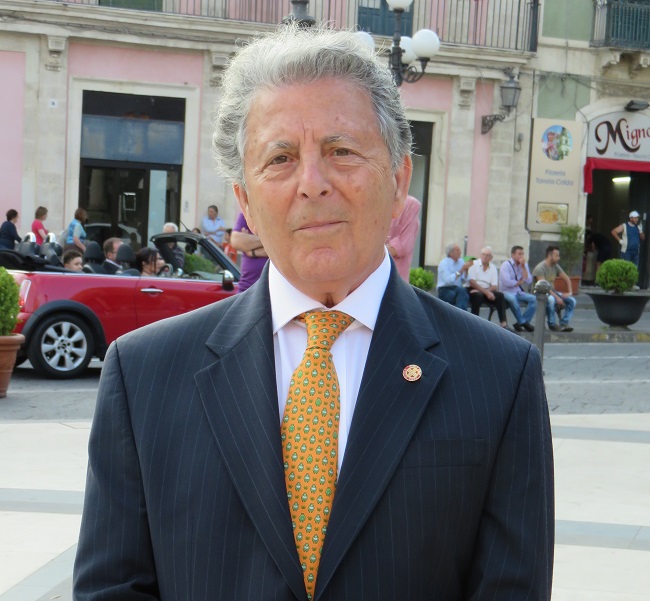
L’Idea Magazine: A message for our readers?
Gaetano Cipolla: I hope they can appreciate Sicily for what it really is: an island to love. I conclude with a little gem from Giovanni Meli, which gives an idea of the lightness of his verses and the difficulty that translation entails:
LA VUCCA
Ssi capiddi e biundi trizzi
sù jardini di biddizzi,
cussì vaghi, cussì rari,
chi li pari nun ci sù.
Ma la vucca cu li fini
soi dintuzzi alabastrini,
trizzi d’oru, chi abbagghiati,
perdonati, è bedda chiù:
Nun lu negu, amati gigghia,
siti beddi a meravigghia;
siti beddi a signu tali
chi l’uguali nun ci sù.
Ma la vucca ’nzuccarata
quannu parra, quannu ciata,
gigghia beddi, gigghia amati,
perdonati, è bedda chiù.
Occhi, in vui fa pompa Amuri
di l’immensu so valuri,
vostri moti, vostri sguardi
ciammi e dardi d’iddu sù.
Ma la vucca, quannu duci
s apri, e modula la vuci,
occhi… Ah vui mi taliati!…
Pirdunati, ’un parru chiù.
The Mouth
Oh, those braids of golden hair
are a garden sweet and fair;
they’re so beauteous and rare
none comparison will dare.
But the mouth with eburnine,
pearly teeth so neat, so fine,
Golden Braids that all outshine,
please don’t mind, ’tis more divine.
My dear brows, I can’t deny
you’re as lovely as the sky,
you’re so lovely to the eye,
all who see you simply sigh.
But the mouth’s a sugar beet
when she opens it to greet,
lovely brows that love entreat,
please forgive me, ’tis more sweet.
Love has chosen you, dear eyes,
just to flaunt his greatest prize.
All your actions, all your sighs
represent his flames, his guise.
But the mouth I so adore
when her words begin to pour.
Lovely eyes, why do you stare?
Please forbear … I’ll say no more.


